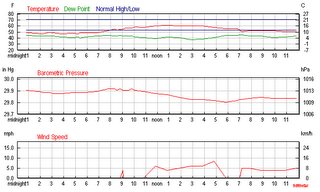Marathon Medical thoughts


The best account of what happened at the Los Angeles Marathon on March 18, 2006 is posted at:
http://lafd.blogspot.com/2006/03/la-marathon-claims-lives-of-retired_19.html
On Saturday, March 19, 2006 beginning at 4:42 AM, twenty-one Companies of Los Angeles Firefighters, twenty-four LAFD Rescue Ambulances, six Bicycle Paramedic teams, three "Gator" teams (6 wheel ATV's with 2 Paramedics), one Arson Unit, two Hazardous Materials Teams, eleven EMS Battalion Captains, four Battalion Chief Officer Command Teams, the LAFD Medical Advisor, one Division Chief Officer Command Team, and a variety of addition support staff, all under the direction of Assistant Chief Michael Fulmis were pre-deployed along the Los Angeles Marathon route.The Los Angeles Fire Department, in conjunction with other City agencies, volunteers, and event organizers spent a significant amount of time preplanning the various aspects of the 21st Annual Los Angeles Marathon. A Unified Command with LAPD and LAFD command staff was implemented and strategically positioned at the City's "Piper Tech" facility. A Forward Command Post was placed at the Bonaventure Hotel to assist in overall management of the incident.
Under the Forward Command post, Divisions, Branches, and Groups were established to handle various aspects of the incident.In an effort to provide rapid Paramedic intervention during a medical emergency, the LAFD deployed six Bicycle Paramedic Teams and three "Gator" Teams. The "Gator" Teams consisted of two Paramedics operating a six-wheeled All Terrain Vehicle. The "Gator" was outfitted with Advanced Life Support tools, a stretcher, and other necessary equipment. The size and configuration of the Bicycle Paramedic Teams, and the "Gator" teams provided paramedics the opportunity to navigate crowds, circumvent traffic, and deliver critical patient care faster.Throughout the day and all along the twenty-six mile route, seventy-five patients were treated by Fire Department personnel for various medical problems including, heat and exhaustion complaints, musculoskeletal injuries, and other medical problems.
Of the seventy-five patients treated, thirty were transported to local hospitals for further medical evaluation. Unfortunately, three runners did suffer a sudden cardiac arrest during the run. Regretfully, two of the runners did loose their lives during this event.
At 8:30 AM, at mile marker one, 15th Street and Figueroa Street, a 70 year-old male runner suffered a full cardiac arrest. Fortunately, personnel from the Los Angeles Convention center were able to immediately utilize a Public AED (Automatic External Defibrillator) on the patient, delivering one shock to the patients heart. Paramedics arrived immediately, continued CPR, provided Advanced Cardiac Life Support, and transported to California Medical Center. The patient was subsequently admitted to the hospital and is listed in critical condition.
At 9:00 AM, at approximately mile marker one, Exposition Boulevard and Figueroa Street, a 60 year-old male runner and retired Los Angeles County Sheriff Deputy James Leone, suffered a full cardiac arrest. Paramedics immediately began CPR and provided immediate Advance Cardiac Life Support. The patient was transported to California Medical Center where the patient was pronounced dead by hospital personnel.
At 1:30 P.M., at approximately mile marker twenty-four, Olympic Boulevard and Westmoreland Avenue, a 53 year-old male and an "active member" of the Los Angeles Police Department, Raul Reyna, suffered a full cardiac arrest. The LAFD Medical Advisor arrived first on scene and immediately began administering advanced airway support and directed on scene medical procedures. Firefighters and Paramedics, pre-deployed along the Marathon route, provided immediate Advanced Cardiac Life Support and rapid transport to Good Samaritan Hospital. Unfortunately, the Paramedics and Hospital staff were unable to revive the Officer and he was pronounced dead at the hospital.
Submitted By Ron Myers, SpokesmanLos Angeles Fire Department
Thoughts on marathoning:
1. Cold will get you as quick as heat will. The temperature at Start was 50-52 degrees. One year at Big Sur Marathon, the temperature was 44 degrees at Start, and we hit rain and hail from mile 2 to mile 5. It was very surreptitious, but from Mile 20 to Mile 26, one could notice that energy was in the "Gone" Zone.
2. Medical aid has come a long way. My expreience with marathons started in the early 1980's. Every five miles, there was an "Aid Tent". If someone went down, you would report it at the Aid Tent, and an ambulance would TRY to thread its way through the runners. In 2004, at the Marine Corps Marathon, they had Navy Corpsmen ( THE BEST EMTs IN THE WORLD) on these Gators. I saw several hapless runners get their butts hauled off.
3. To a marathoner, the biggest disgrace is NOT FINISHING. A secondary, related cause for disgrace and ostracism is finding out that one cheated, usually by taking a short cut. Instead of 26.2 miles, the disgraced runner ran anything less than the full 26.2.
4. Don't mess with a marathoner. We may not do 4 minute miles, and when you are running, you are only competing with yourself, or trying to keep your finish time at the same as you get older. But, marathoners know that anyone can do 20 or 21 miles. From mile 22 to finish, you have to employ self-discipline and kick your own ass to keep going. It would be SO easy to QUIT and let that van take you in. BUT--you would never show your face at a race ever again.
The only thing lacking to a marathoner who does not finish is a Hari-Kiri blade to stave off the disappointment.
5. Does anyone know any sport, concert, or assembly that has 19985 people who complete the event. Noramaly, there are acouple of hundred who sign up, but do not show up to start. Additionally, there about four hundred who do not finish.

0 Comments:
Post a Comment
<< Home